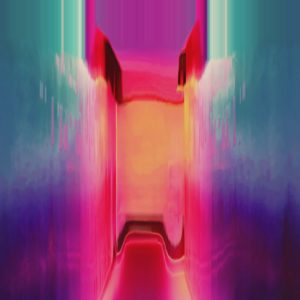How can NFTs enhance the hybrid experience?
As humble artisans, and committed disciples of hybrid culture, we keep an eager eye over the shifts, turns and promises of the digital realm — always striving to integrate them into the ever-morphing craft of experience-making. Blockchain technology, and particularly NFTs, offer a fresh and compelling alleyway into the virtual space — which is why, to coincide with our collaboration with NFT music marketplace Twelve x Twelve, we’ve decided to carry out a triad of informative interviews with some of the project’s masterminds. First up, our CEO Brendan Shelper breaks down NFTs role in enhancing the Metaverse, the future of the hybrid industry, and Gen Z’s proclivity for digital ownership.
To kick us off, what are NFTs?
In a nutshell, NFTs — an acronym for “non-fungible tokens”– are a unique file or asset made on the blockchain, which cannot be duplicated. Each file has a type of smart contract attached to it, which can hold rights, licensing info, and ownership details.
Essentially, anything digital — be it a photo, video, GIF, or even an AI-driven artwork– can now be tagged with unique code which specifies its rightful owner. It is a major accomplishment when you think about how much we exchange on the internet.
As we gravitate more to online experiences within the Metaverse and Web3.0, NFTs will become a way to create scarcity within an infinite virtual world. This could lead to digital assets becoming less disposable and more cherished, and possibly ending the massive amounts of legal disputes over ownership within the digital realm.
NFTs allow us to truly own something within the digital world.
What first sparked your interest in the concept of NFT?
I’ve been interested in blockchain for a while. I’m a cryptocurrency investor, and always wondered if there would soon be a way for people to exert ownership over digital assets online. NFTs are the answer to that, so it’s not even about their immediate use, but how they could be used in the near future to dramatically influence how we create, exchange, and leave our legacy online.
Give an example of how, in your view, NFTs or blockchain can enhance a hybrid experience.
Hybrid offerings are most interesting when they merge a physical and digital experience. If you consider a virtual experience where the exchange of digital assets and currency can easily emulate the real world — for instance buying online merchandise or services — all this can be done securely and safely with blockchain technology. NFTs give us the possibility of owning unique digital assets, and also to trade those assets online. Which means that in the greater Metaverse, I can buy a ticket to a virtual club night, see a livestream music act or performance in the club, then buy the music and/or limited release NFT art after the show as well as some fashion accessories for my Avatar to wear — all using cryptocurrency, or tokens powered by blockchain technology.

(c) Twelve x Twelve

(c) Twelve x Twelve
How has the NFT hype changed your personal understanding of the possibilities of hybrid culture?
I think we need to consider how younger generations are now interacting with the Metaverse and the gaming world. These kids are not coming to their parents and asking for money to buy clothes or Nike trainers for themselves — they’re asking for money to buy digital fashion items for their avatars, within their gaming environments. The connection my generation has with owning and acquiring physical goods, the younger generation experiences with digital assets. It’s a wild change of desires, and priorities.
It’s equally interesting to see physical offerings paired with digital assets. For example, I might buy a new jacket from H&M and get the digital version for use in the Metaverse for free, or vice versa.
What, in your view, is the biggest misconception people have with regard to NFTs, and what would you like to say to them/ how would you change their minds?
The biggest misconception is probably that people think NFTs are a cryptocurrency, which is not correct. And for this reason, they think that what we’re experiencing now in the NFT world is a bubble waiting to burst. While the use of NFTs will change and evolve, we see the fundamental potential of this technology as something that will gradually infiltrate our everyday lives — possibly quite rapidly, over the next few years.
What have you enjoyed the most about this first integration of NFTs in the work of battleROYAL, by collaborating on Twelve x Twelve?
As we continue to develop our digital offerings, such as the event portal we’re using for current online experiences, and augmented or virtual reality design, we increasingly witness the potential for new technologies to disrupt our processes when paired with great creative ideas. NFTs, the marketplace and the collaborations battleROYAL is making with wonderful creatives is a breath of fresh air. Coming together with some of the best designers and creators from around the world to curate and execute a whole new range of diverse digital collectables is exciting; it feels like anything is possible at this stage. And working with Twelve x Twelve to develop and expand their marketplace into an entire Metaverse ecosystem is the coolest creative undertaking one could wish for.

(c) Twelve x Twelve
How would you like blockchain and NFT technologies to continue weaving into battleROYAL’s upcoming projects?
I would like to convert the experiences we’re crafting into collectable memorabilia. For the past 10 years, the live or digital happenings we’ve created have very much been one-off, ephemeral moments. I see this technology, and certainly the Metaverse as a big part of securing the longevity of everything we create from now, with the potential of it being purchased, collected, swapped, and living forever.
What excites you the most about the future possibilities of NFT democratisation and mainstreamization?
Let’s think about major public events or ceremonies, for example. The recent Tokyo Olympic closing ceremony featured an augmented reality installation, where small lights emerged from the stadium to form golden Olympic rings hovering over the center of the arena. It was seen by billions of people around the world, and now this digital creation could be legitimately auctioned off to a passionate collector, museum or community — it can be traded and exchanged via NFT marketplaces, and over the years, its notoriety and value would increase just as any artefact, antique or artwork. Users could display it in their virtual galleries within the Metaverse for future generations to enjoy —and this is only the beginning.


